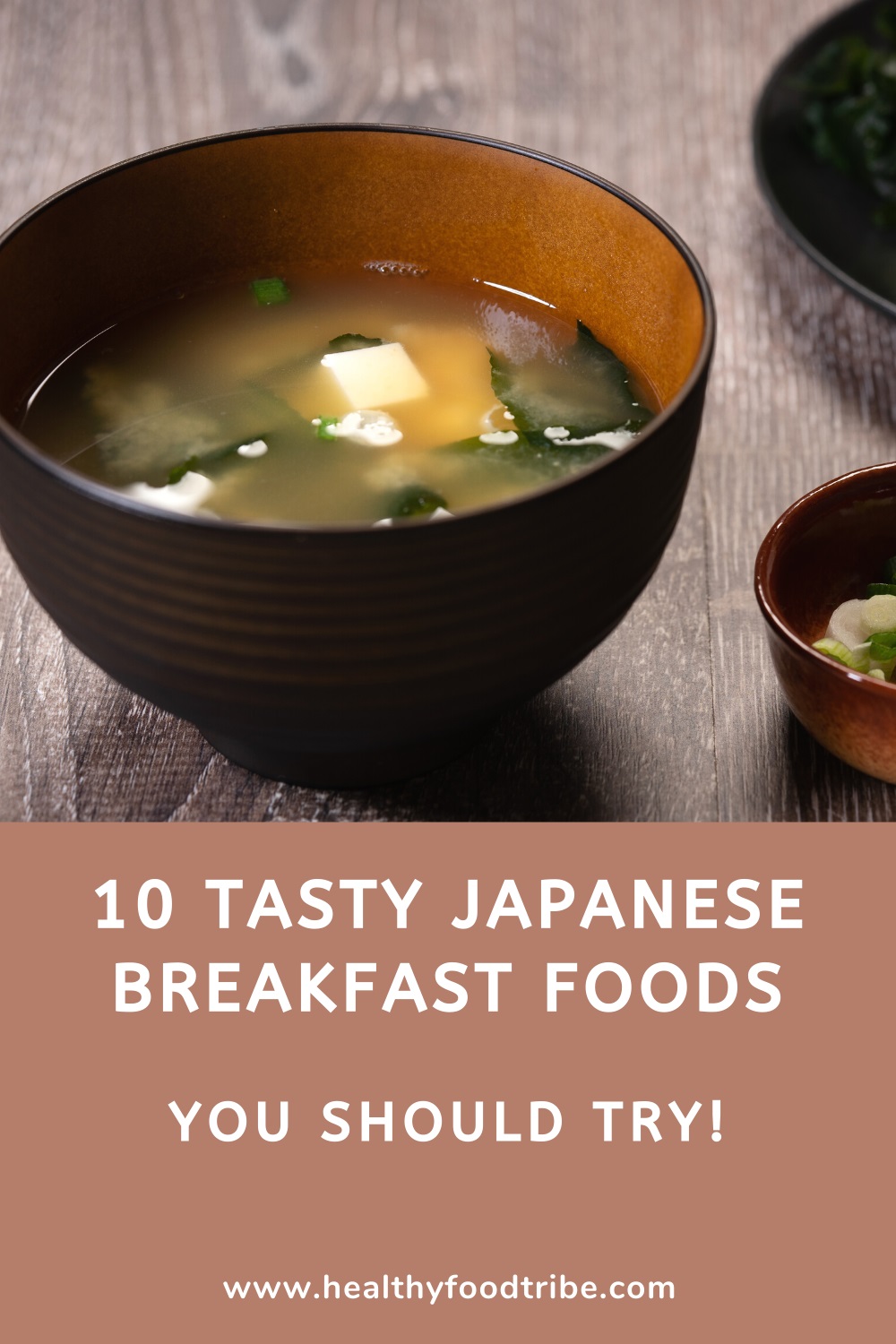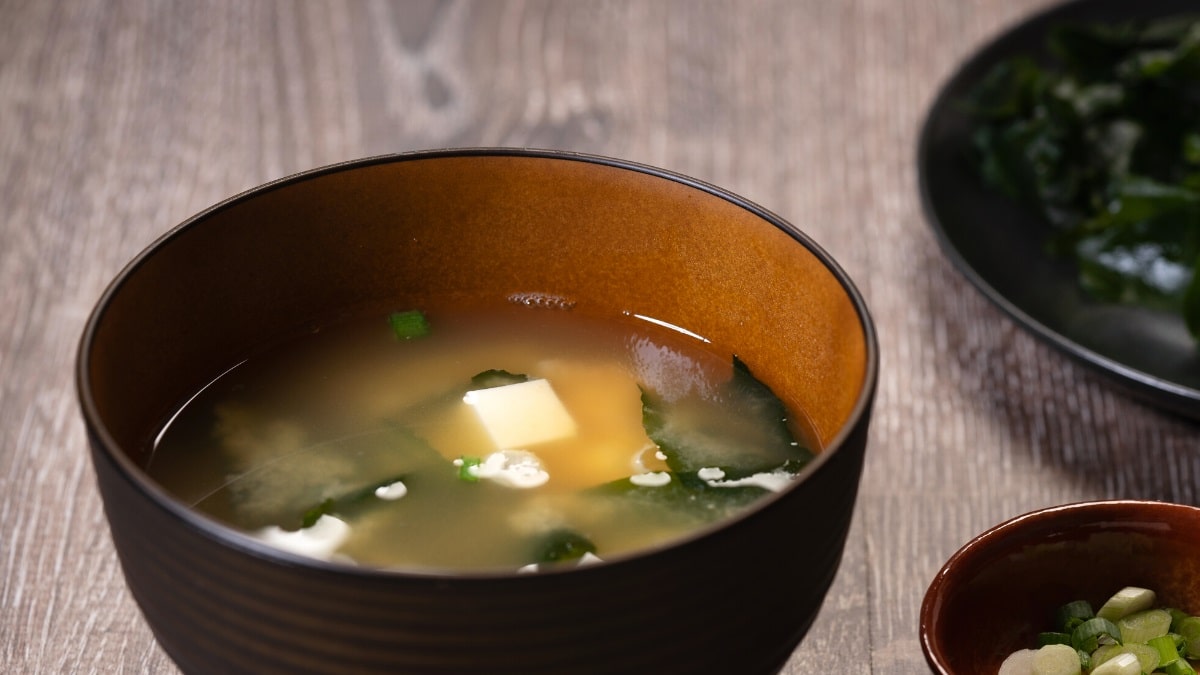Last updated: February 21, 2024
Traditional Japanese cultural beliefs dictate that the first meal of the day should include a well-rounded assortment of foods to provide nutrients and energy.
Only with that kind of breakfast in your stomach will you be able to face the day with sufficient energy and grace.
With that in mind, it’s no surprise that typical Japanese breakfast foods are nothing like those found in most Western households.
Are you looking to add some more variety to your breakfast habits? In this article, I will share ten staples of Japanese breakfasts and discuss their origins and recipe ideas.
If you’d like to learn more about the exciting world of Japanese cuisine, read my guide to Japanese food culture facts.
1. Tofu

Tofu almost always makes an appearance at breakfast in Japan. If fish is served as the main protein, then tofu may be limited to just being included in miso soup. But when fish isn’t served, tofu typically fills the role of being the main protein source.
As with most foods at this meal, the flavoring used for breakfast tofu is typically mild. The cubes may be sauteed in soy sauce or sesame oil, and are typically topped with a little grated ginger or garlic, or Japanese green onion.
The tofu can be eaten alone or used to top the rice or porridge dish. It can also be mixed with pickled or cooked vegetables.
2. Egg
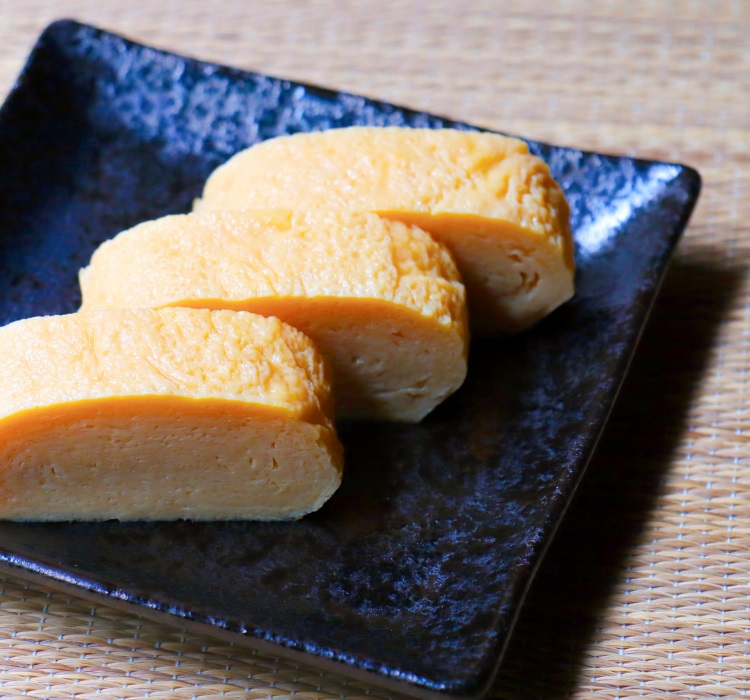
This particular Japanese breakfast item may look familiar in text, but it can differ greatly in presentation.
In traditional Japanese breakfasts, eggs are typically used to create tamagoyaki. Also known as a Japanese rolled omelet, this sweet yet savory dish consists of eggs, soup stalk or mirin, and a sprinkle of sugar. Other ingredients, including vegetables and seaweed, can also be added.
The egg mixture is cooked thin like a crepe, then rolled over itself to create a thick, layered omelet. The final product has a slightly mushy, custard-like texture that is different from scrambled eggs. Alternatively, eggs can be simply fried and used as a side or topping in traditional Japanese breakfasts.
Eggs bring plenty of nutrients to the table. They are loaded with protein, minerals, and vitamins, and when mixed with traditional Japanese soup stock (dashi), you’ll also get a healthy dose of probiotics.
3. Pickled Vegetables
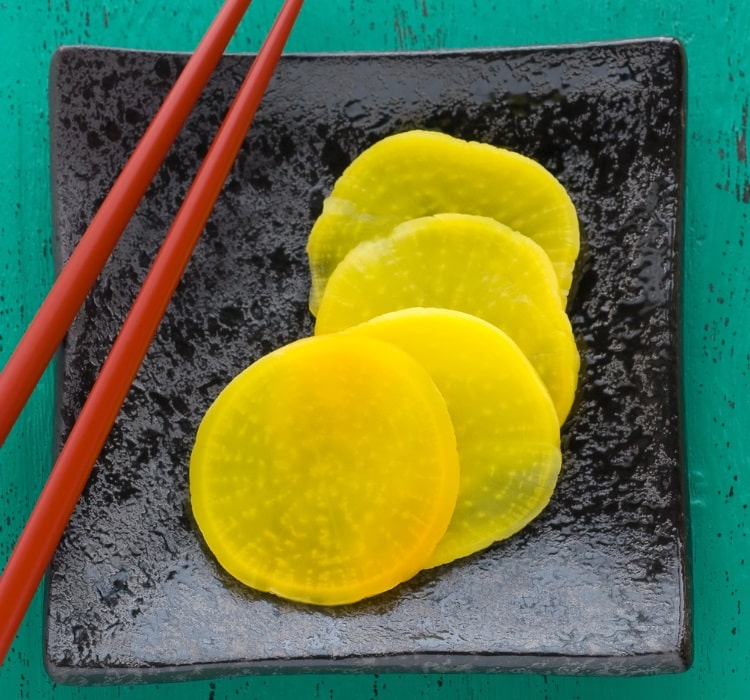
Called tsukemono in Japan, pickled vegetables are a common side dish on the breakfast table. Typically, this dish contains just one or two types of vegetables. Cucumbers, daikon, carrots, and cabbage are the most popular choices.
Also common is umeboshi, or pickled ume. This fruit, which is closely related to apricots, is more salty and sour when pickled than it is sweet.
Unlike most pickled vegetables in America, tsukemono is made without vinegar. Instead, the vegetables are brined using salt and soy sauce, miso, or rice bran.
Pickled vegetables are usually served alone but often dished up as a topping for steamed rice or rice porridge.
4. Vegetables
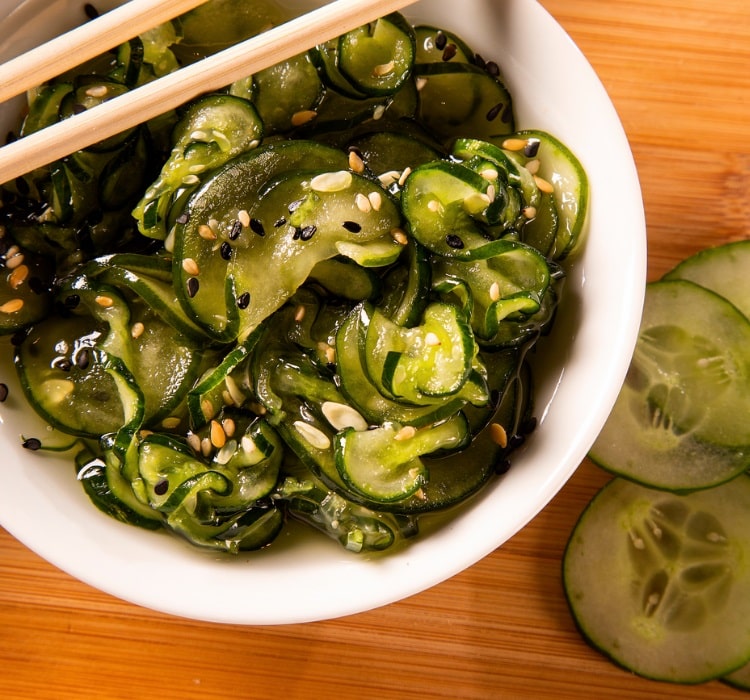
In addition to pickled veggies and seaweed, breakfast also usually comes with a side of raw or cooked vegetables.
These veggies can be prepared in a number of ways. Simple steamed vegetables are common, but so are raw salads topped with dressing and blanched veggies drizzled with oil.
The most common vegetables you’ll find at a Japanese-style breakfast include eggplant, green beans, broccoli, cucumbers, and kabocha.
Read my guide to popular vegetables in Japan to learn more about Japanese veggies and how they are used in recipes.
5. Fish
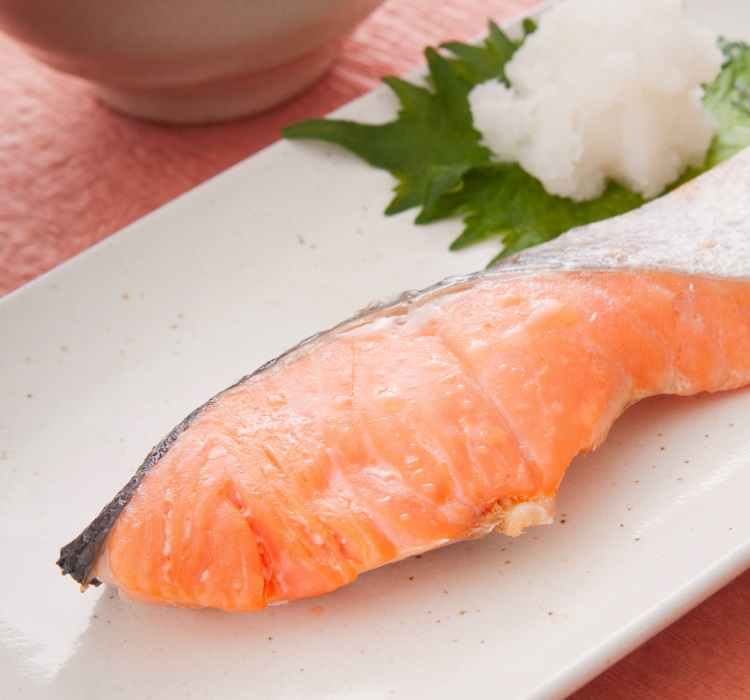
Fish is a staple of Japanese cuisine, so it should come as no surprise that it makes an appearance at the breakfast table as well.
The most common type of fish for this meal is salmon. It is typically simply prepared with only added salt or as sashimi. Grilled mackerel is also very popular for the first meal of the day.
In both cases, oil and seasoning are kept to a minimum to reduce the “heaviness” of the dish. While fried fish is common at lunch and dinner, it is not typically prepared this way for breakfast. Raw fish is also rare at the morning meal.
6. Miso Soup
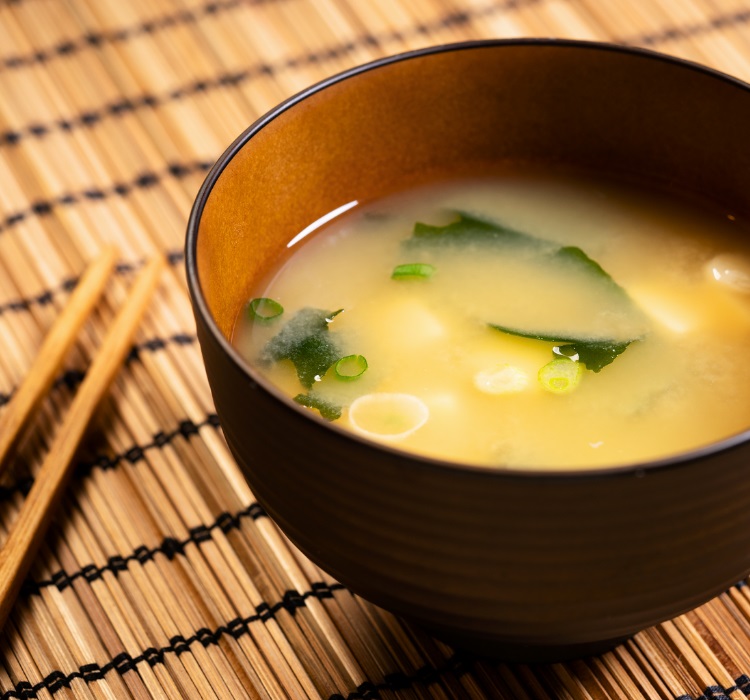
Miso soup often makes up the central dish in any Japanese breakfast spread. This simple yet comforting soup offers the right combination of warming flavors and nutrition to kick-start the day.
The term “miso soup” refers to any soup with a base that consists of miso and dashi (traditional Japanese soup stock). Common ingredients added to this base include tofu, mushrooms, seaweed, kabocha, and any other vegetables on hand.
Because the central ingredient in this soup is miso, a type of fermented soy paste, the soup itself is very high in probiotics.
7. Porridge
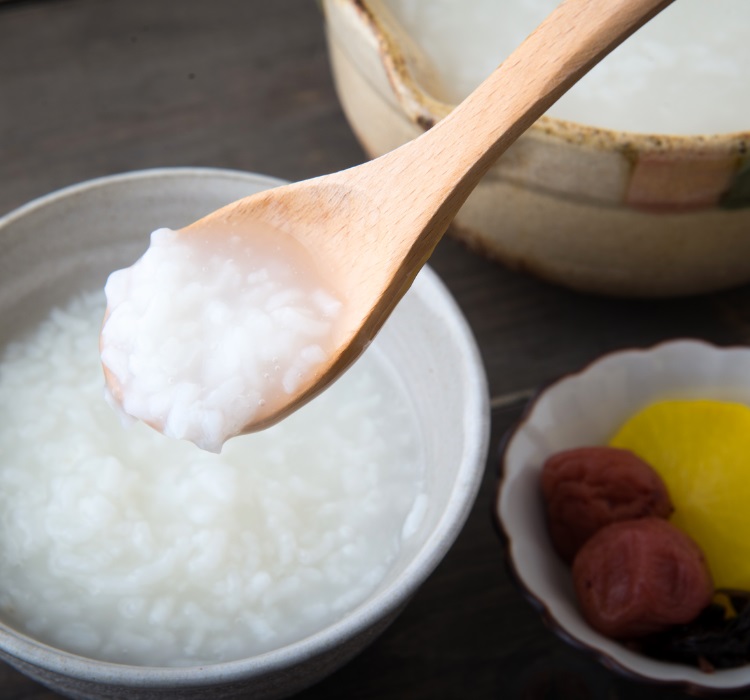
Porridge in Japan typically consists of rice cooked with excess water. The dish is known as okayu and is very common at the breakfast table.
Making rice porridge is as easy as simmering rice in water until the water dissolves and the rice takes on the typical squishy porridge texture.
This type of rice is far more broken down than typical sticky rice, which makes it much easier to digest. In addition to being used as a breakfast staple, rice porridge is also commonly served to toddlers and older people.
The dish is usually not seasoned. However, once served, it is paired with many other dishes on the table to create a flavorful meal. Rice porridge can be topped with grilled fish, pickled vegetables, natto, or raw green onions.
8. Rice
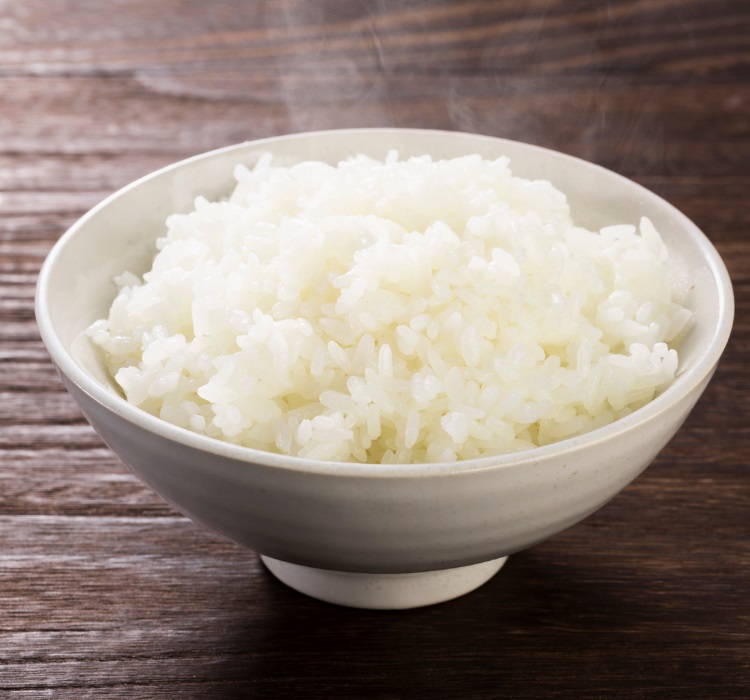
If porridge doesn’t make an appearance at breakfast, cooked rice typically does. This type of rice is usually steamed and served without spices. It serves as the meal’s centerpiece and provides a filling yet light option to satisfy without weighing down.
Like porridge, steamed rice brings a neutral flavor that is meant to be enhanced by topping it with other options at the table.
In Japan, it is most common to use processed white rice for this dish. Brown rice can also be used but is generally considered a specialty food.
The latter brings more fiber and nutrition to the meal. But white rice is easier to digest and helps usher the nutrients in the other dishes into the body more quickly.
9. Seaweed
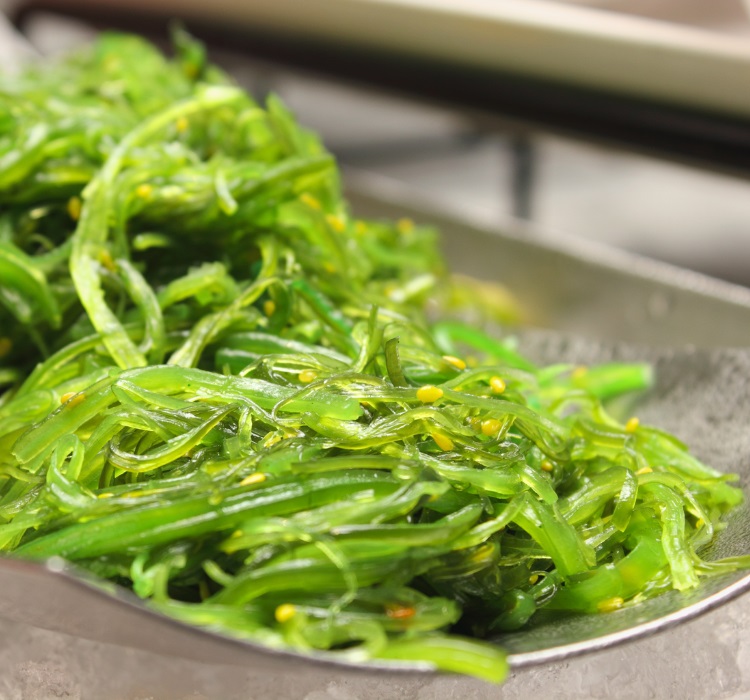
Seaweed, or nori, is another typical side dish at breakfast. It can be served dry or seasoned.
In Japan, seasoned seaweed can be purchased fresh at certain times of the year, but it is most often bought dried, and rehydrated during preparation. Typically, this involves marinating the seaweed in soy sauce or rice vinegar and adding spices like ginger, garlic, and red pepper flakes.
Both dried seaweed and seasoned options are added to plain rice at breakfast. The seaweed can also be eaten alone.
Either way, this acquired taste packs an impressive amount of nutrition. Most seaweed varieties are high in iodine, copper, iron, riboflavin, magnesium, and antioxidants.
10. Natto
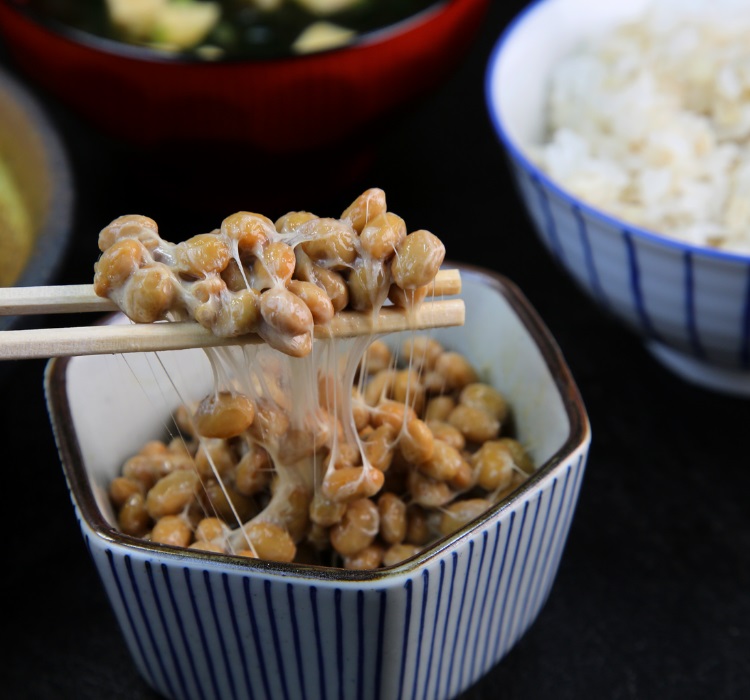
Natto is a uniquely Japanese dish that consists of fermented soybeans. The beans soften with fermentation and take on a sticky texture, complete with visible strings of slime. The mix is often flavored with karashi mustard or soy sauce and is typically served cold over rice.
With an odor like aged cheese and a flavor between salty cottage cheese and stinky brie, it’s no surprise that natto is an acquired taste. In fact, only about 70% of Japanese people admit to liking it. Still, many eat it out of tradition.
Natto has deep roots in the country and plenty of myths surround its origins. One such myth tells of a samurai troop that was attacked while boiling soybeans for their horses. They packed the beans up to flee and, when they opened them days later, found they had fermented into a nutritious gruel.
